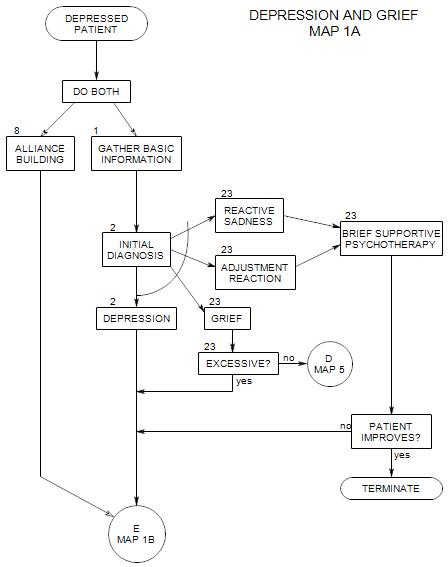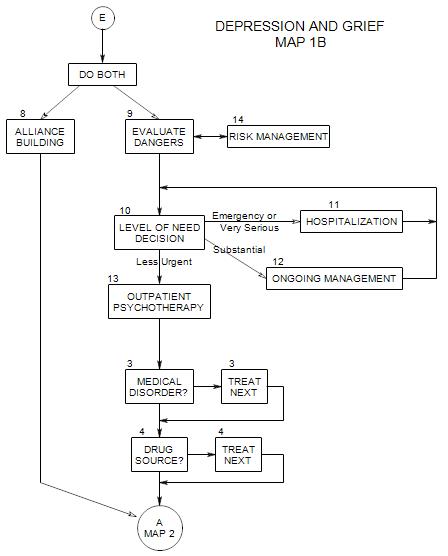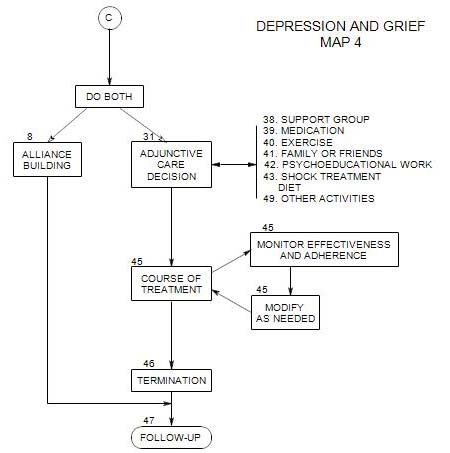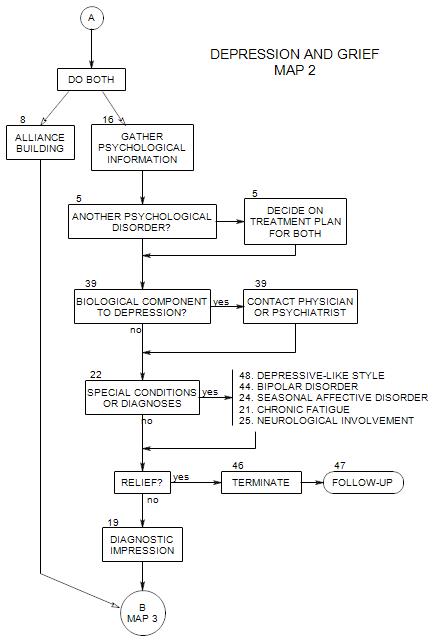
SECTIONS: 5 | 8 | 16 | 19 | 21 | 22 | 24 | 25 | 39 | 44 | 46 | 47 | 48
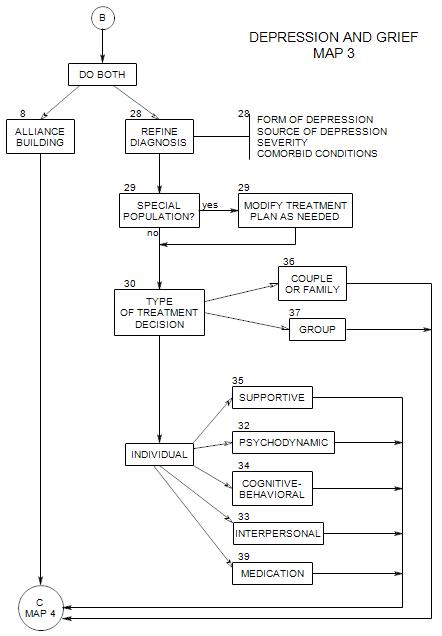
SECTIONS: 8 | 28 | 29 | 30 | 32 | 33 | 34 | 35 | 36 | 37 | 39
-
Follows from Section 31 on Map 4
Depressed people have a strong tendency to withdraw and become inactive. The inactivity compounds with depression, making it worse. For many people, regular exercise can be a powerful antidote to depression. According to Blumenthal, regular exercise can be as effective as antidepressant medication for some people.
Regular exercise…
- Leads to a sense of self control
- May increase production of neurotransmitters that signal well-being
- Can lead to increased involvement with others
Find out the person’s history with exercise and sports. It may be that he/she already has experiences that make some programs comfortable and some others uncomfortable. A person who has enjoyed riding a bicycle on vacation in the past might want to take up regular biking as an exercise program. However, if the streets near home are dangerous, biking might require extra planning to be carried out.
Next, get information about the person’s current physical activity level. There is a tendency for many people to start too hard and become discouraged, or to begin something that they can’t continue. An exercise program should be easily begun, increased naturally, and continued indefinitely.
If you are recommending an exercise program to someone who has not exercised regularly for a while, he/she should probably have a physical checkup before beginning.
Gyms commonly have workout equipment and trainers who can get a person moving in a systematic and slowly progressive way. A consultation with a physical therapist can get the person on an effective path.
People who are already exercising may not be helped physically as much, but a regular program can have other benefits –
- Organization to one’s life, if the exercise is done at a regular time.
- Contact with other people in either a cooperative or competitive way, on a team or at a gym.
- Increased interest from the game itself. The competition of singles tennis, the competition and cooperation of doubles.
- Performance against one’s own standards can raise involvement. In running, the distance gone can be recorded and increased over time. Runners commonly keep track of their times, which usually are announced at organized races.
- Taking a regular martial arts class can have many benefits, including increased balance and coordination, working in concert with others, and feeling more confident in being able to defend oneself.
Some kind of record-keeping is very helpful. The person can keep track of time spent exercising, distance traveled when running, walking, kayaking or bicycling; or the time taken to run or row a regular distance. Periodic review in session helps the person stay on-track and discuss any difficulties with the program. Of course, the task or even the sport can be changed from-time-to-time, for a variety of reasons.
References
Blumenthal, J.A., Babyak, M.A., Doraiswamy, P.M.etal., 2007 “Exercise and pharmacotherapy in the treatment of major depressive disorder. Psychosomatic Medicine, 69[17], 587-596.
Novotney, Amy. “Get your clients moving: Ten tips to incorporate exercise into your treatment arsenal. Monitor on Psychology, Jy/Au 2008, 68-69.
